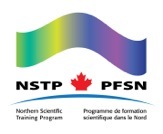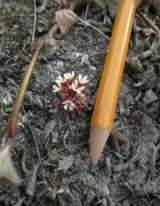
PLEASE NOTE, NSTP NO LONGER REQUIRES STUDENTS TO SUBMIT REPORTS. THIS INFORMATION IS OUTDATED AND YOU HAVE ARRIVED HERE AFTER FOLLOWING AN OLD LINK.
If you received funding from NSTP for field research to be conducted between April 1, 2024 and March 31, 2025 you are required to complete an NSTP report by November 1, 2024 in order to account for the use of your NSTP funds.
If you have not yet completed your field work because you will be going North during fall or winter months, then complete the report form as an interim report for the same deadline. In this case, it is important to fill in all sections describing the importance of fall/winter field work for your research, and/or any reasons for delays in field work plans as outlined in your original proposal, and how you intend to use NSTP fund allocated to you. In these cases, a final report must be also be submitted by March 31 to account for the actual use of NSTP funds.
Please carefully review the instructions provided in the NSTP Information Manual (Student’s Information Section p. 11-19 has detailed instructions), as well as consulting the tips below, to help you prepare your NSTP Report.
NSTP report forms must be accessed through the NSTP online system and submitted electronically. For technical assistance or questions regarding any aspect of the online system, please contact NSTP staff directly (email nstp-pfsn@polar-polaire.gc.ca or call Nathalie Robillard-Bergeron 613-222-9537).
IMPORTANT DEADLINES
NOVEMBER 1, 2024 – All reports on funding must be completed online and approved by your supervisor by this date. To meet this deadline is strongly recommended that all your portions of the application are complete online prior to October 25 in order to allow sufficient time for review and feedback from your supervisor.
MARCH 31, 2025 – Any NSTP-funded students during the 2024-25 fiscal year who submitted an interim report for the November 1, 2024 reporting deadline (i.e., used their NSTP funds to support field work in late fall 2024 or winter 2025), must submit their final report to NSTP by this deadline, which marks the end of the fiscal year.
No later than 5 days prior to travelling – A final version of your Field Safety Form must be completed and returned to the Northern Research Committee Chair or NSTP funding will be withheld.
TIPS FOR PREPARING YOUR NSTP REPORT
In addition to instructions in the NSTP Information Manual, the following are comments that the Northern Research Committee commonly makes each year in reviewing student reports. These kinds of comments must be addressed prior to the Chair approving a student’s report, and must be received PRIOR to the submission deadline in order for the submission to be passed on to NSTP.
Page 1, Student Information: Academic Level – Be sure to indicate the degree and year you were enrolled in when you APPLIED for NSTP funding (i.e. it needs to match what you input last year).
Page 2: Title of Project – Consider including locational descriptors (e.g. community, territory, or specific field site) in your title, to help situate your research (typically this is the same title as your application, unless you changed your research direction).
Page 2, Brief Description of Project Including: Objectives and Methodology – Be sure to clearly and concisely address ALL of the elements required in this section, including descriptions of:
- the project objective
- the research methodology and methods used
- how the field research was carried out
Note that this section should NOT be copy and pasted from the original NSTP application. Some of the project description and methods may remain the same, but any adjustments over the course of the year, or the field season, should be clearly identified. If your work is part of a larger project, it is important to include as relevant context, but be sure to focus mainly on the description of your particular research and related contributions. Keep in mind that a committee with diverse northern expertise will be reading your report (both at Carleton and at the NSTP national level), so keep the language simple and clear, and define any technical or discipline-specific terms that you need to include.
Page 2, Brief Description of Project Including: Progress to Date – Be sure to clearly and concisely describe your preliminary results, progress made and how the information is expected to be disseminated. Even if you are writing an interim report, you can highlight progress you have made with regards to degree requirements (e.g. coursework, comprehensive exam, proposal, etc.), making northern community or institutional contacts, and/or making field work plans. Also, language should be in past tense, describing what you accomplished (i.e. what you have done), rather than in the proposal wording (i.e. what you will do. If you have upcoming field work planned for November – March where you will be using your NSTP funding allocation, please be sure to specifically address this in the context of progress to date as you will be reporting on this at the end of the fiscal year (March 31).
Page 2: Research Partners – Supervisors or other Carleton students SHOULD NOT be listed as Research Partners. This section is for identifying important research partners from other organizations/universities who are closely involved with the project planning, direction, and/or field work.
Page 3: Applicable Permit/Licence Number(s) and Name of Issuer – Once you have selected the appropriate licencing/permitting body for the relevant territory(ies) where field work is located, be sure to add relevant details in the free form section. It is important to specify under whose name is the licence/permit (the student’s? supervisor’s? another research partner’s?), the duration or licence/permit approval (i.e. one year, multi-year, etc. with appropriate years noted), and the license/permit number if possible. A full list of potential licences, permits, and other requirements in different regions is provided by NSTP.
Page 3: Community Interaction/Engagement – The NSTP committee places great importance on community interactions and engagement. In this section, describe the efforts you have made with regards to sharing information and building relationships with northern communities. This could have occurred in various ways, as introduced in Appendix 2 of the NSTP Information Manual. As well, please consult this handout on community interaction and these examples for further guidance. The appropriate type of outreach and engagement will depend on the research project and location, so please explain accordingly.
Page 4: Rationale for the length of your stay(s) in the North – NSTP encourages students to stay as long as possible in the North. Explain the reason for your length of stay in the free-form section. If your stay was short, be sure to not only explain why that was the case (e.g. time limitations due to other commitments, transportation limitations, etc.), but also why this shorter duration was sufficient for addressing your research objectives as explained in the project description. If you have not yet completed your field work because you will be travelling later in the year, indicate 0 days here, and explain in the free-form section about the timing and duration of your intended travel prior to March 31.
Page 4: Total cost of fieldwork, NSTP support, and other funding – The total field work costs, should equal the sum of NSTP support and other funding. Therefore, when detailing total field work costs, consult with your supervisors about the total costs involved in just your own student portion of field work (not the total cost of everything to do with a particular field program). This way, when you add up your NSTP support (which should equal actual NSTP costs incurred to account for all funds you were allocated), and other funding you receive (which could be from your supervisor’s grant(s), scholarships, RA positions, etc.) it should reflect the total costs involved in your specific field work. Please note that if you do include scholarship funding, it should only be the specific portion of your scholarship that you have dedicated to supporting your field research (i.e. not the total scholarship amount). Please carefully review the list of eligible and ineligible expenses for use of NSTP funds summarized in the Travel section (and see the NSTP Information Manual Guidelines section b) on pg 4-5).
Page 5: Publications – Please input bibliographic information on any report, poster, presentation, article, thesis, etc related to your NSTP supported research. This helps NSTP justify this program and continue to supply research funding for field work.
Page 6: Supervisor comments and signatures – The student’s supervisor is responsible for completing this section. Comments should focus on student training (including relevant previous training experience), how the NSTP-supported field work relates to student research (i.e., completing their thesis, and relevance to current northern issues) as well as to the student’s future in northern research. Please be sure to clearly explain how the student has benefitted from the research conducted, and how having NSTP funding has contributed to this benefit. In addition, it is helpful for the supervisor to highlight any student interactions with northern communities, and how this was relevant for conducting – or reporting on – their research. If the student’s research has changed over the course of the year and/or field season, please be sure to address the reasons for this in your comments (to provide additional context to student statements). Approving the student’s report also means that the supervisor confirms that they have reviewed all sections of the NSTP report to ensure that they meet the required criteria laid out in the NSTP Information Manual, and in consideration of additional suggestions described in the sections above.
Students are responsible for preparing all aspects of the NSTP report, but supervisors are asked to carefully review each section to ensure they address all required elements of the reports prior to completing the Supervisor Comments, and approving the report for Chairperson review. This will greatly aid in streamlining the process, and helps to avoid iterative reviews after the initial submission.